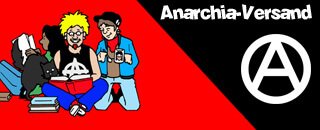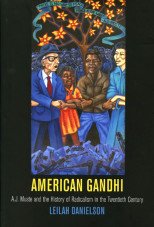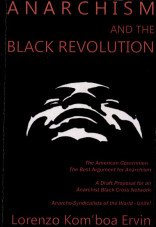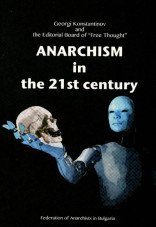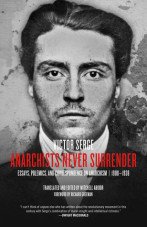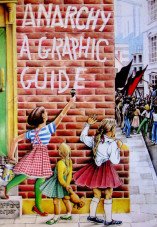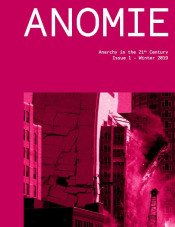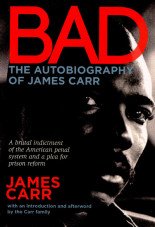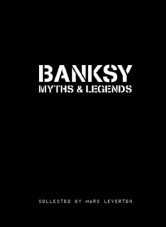Diverse englische Verlage
When Abraham Johannes Muste died in 1967, newspapers throughout the world referred to him as the "American Gandhi." Best known for his role in the labor movement of the 1930s and his leadership of the peace movement in the postwar era, Muste was one of the most charismatic figures of the American left in his time. Had he written the story of his life, it would also have been the story of social and political struggles in the United States during the twentieth century.
Autor*innen: Leilah Danielson
Lithuanian born anarchist Emma Goldman emmigrated to the United States at the age of sixteen. She first became attracted to anarchism following the Haymarket affair of 1886, a massacre in which seven police officers and an unknown number of civilians were killed during a march of striking Chicago workers. Eight anarchists were subsequently tried for murder. "Anarchism and Other Essays" is a collection of essays first published in 1911.
Autor*innen: Emma Goldman
Anarchist theory has long suffered from a whiteness problem. This book places its critique of both capitalism and racism firmly at the centre of the text. Making a powerful case for the building of a Black revolutionary movement that rejects sexism, homophobia, militarism and racism, Lorenzo Kom'boa Ervin counters the lies and distortions about anarchism spread by its left- and right-wing opponents alike.
Autor*innen: Lorenzo Kom´boa Ervin
“Anarchism in the 21st Century” is a structured contemporary theory meant to address some of the most frequent questions that arise among people interested in anarchism. This brochure, the collective work of the Editorial Board, is a sample of Konstantinov’s lifelong inquiries into the future of humanity and his political argument for anarchism as the only possibility for human survival after the Robotronic revolution.
Autor*innen: Georgi Konstantinov u.a.
Providing a complete picture of Victor Serge s relationship to anarchist action and doctrine, this volume contains writings going back to his teenage years in Brussels, where he became influenced by the doctrine of individualist anarchism. At the heart of the anthology are key articles written soon after his arrival in Paris in 1909, when he became editor of the newspaper "l'anarchie." In these articles Serge develops and debates his own radical thoughts, arguing the futility of mass action and embracing illegalism. Serge s involvement with the notorious French group of anarchist armed robbers, the Bonnot Gang, landed Serge in prison for the first time in 1912. The book includes both his prison correspondence with his anarchist comrade Emile Armand and articles written immediately after his release. The book also includes several articles and letters written by Serge after he had left anarchism behind and joined the Russian Bolsheviks in 1919.
Autor*innen: Victor Serge
Wunderschöne Layoutvorlagen und kurzgefaßte Geschichte des Anarchismus...
Autor*innen: Clifford Harper
- Anarchism is Female-Gendered
- We can do a better job, it’s obvious
- A Landlord’s paradise
- The precarity of Larkin has returned: So too must his syndicalism
- Anarchism and the modern precariat: a dysfunctional tryst
- How to resist concentrations of power: Anarchism in the FOSSeable future
- Seize the memes of Production
- Anomie Aunt
- Bleeding With Dignity / Danai Spyrou
- Whither Irish Politics? / O. P.
- Renters of the world, unite! You have nothing to lose but your parasite! / Dr. W.D. Sharkey
- Athens Housing Crisis / Brad Fredricks
- Collective resistance against the hyper-commodified world of Real Estate / Koukaki's and nearby areas' residents
- What is going to happen here? / Habita! - Stop Despejos - Left Hand Rotation
- A night out in Nottingham... / Dan Connolly
- Another story memory / Giorgos Kossyfas
- Anomie Aunt
The topic of issue #3 is nationalism and it contains texts written by anarchists from Zagreb, Thessaloniki, Belgrade, Athens, Ljubljana, Paris and Los Angeles. Some of the topics covered are: critiques of anti-imperialism, critiques of nationalist policies of groups such as Young Bosnia (famous because of an incident in 1914) and the Communist Party of Yugoslavia, the anti-nationalist ideas of Robert Musil, and others.
Autor*innen: Antipolitika
Autor*innen: James Carr
No single living artist has created as many myths, rumours and legends as Banksy. Many of the tales in this book are from Bristol, some are from further afield. What they share is that they are all told with the wide eyed wonder which Banksy inspires. Collated between 2009 and 2011 some of these stories are quite old and have been told so many times they have become the stuff of legend, others are more questionable and best described as myths. Some are laugh out loud bollocks and others are simply gossip. You be the judge!
Autor*innen: Marc Leverton
Bloc by Bloc is a cooperative and semi-cooperative strategy game inspired by contemporary protest movements, riots, and popular uprisings. Each player controls a faction of revolutionaries - Workers, Students, Neighbors, or Prisoners - struggling together against the police in the streets of a city that changes with each game. Build barricades, clash with police, occupy districts, loot shopping centers, build mutual aid networks, and liberate the city before time runs out and the military arrives!
Dritte aktualisierte Auflage vom November 2022




